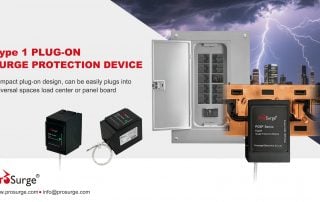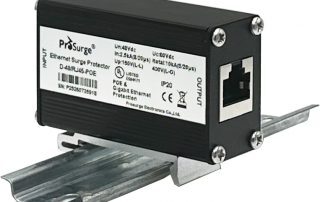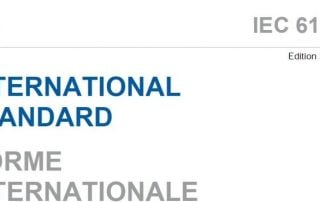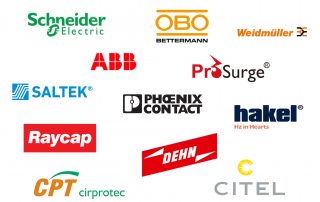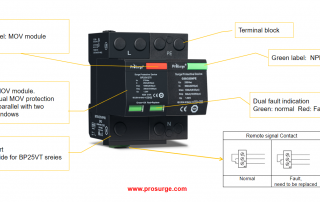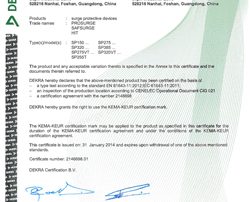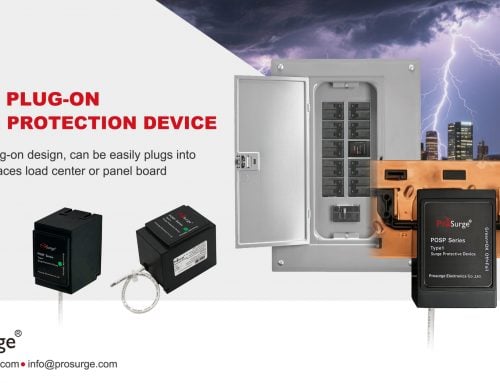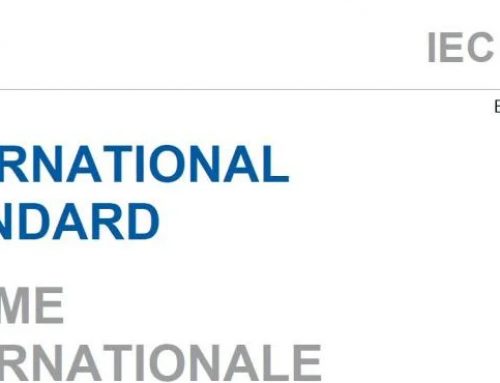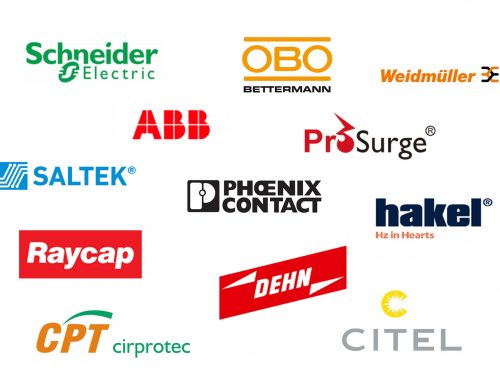Surge Protective Devices (SPD) are used to protect electrical equipment against surges (overvoltages) caused by lightning or switch of heavy duty machines (many people may ignore this). It may take some technical background when selecting a proper surge protective device as there are various technologies and regulations.
The IEC 61643 standard defines 3 types of surge protective devices for low voltage electrical system.
Type 1 or Class I: Type 1 SPD can discharge strong lightning current and are installed in the main electrical switchboard when the building is protected with lightning protection system (lightning rod, down conductor and grounding).
Type 2 or Class II: These surge protective device (SPD) is designed to discharge current generated by indirect lightning hit which caused induced overvoltage on the power distribution network. Typically, they are installed at the main distribution switchboard. Type 2 SPD are the most popular SPD on the market and Prosurge is offering them with different certificates.
Type 3 or Class III: Type 3 SPDs are designed to reduce the overvoltage at the terminals of sensitive equipment and therefore has a relative limited discharge current capacity.
Where should SPD be installed?
Type 2 surge protective device will be installed in the electrical installation’s incoming-end switchboard. If the distance between that surge protective device and the protected equipment exceeds 30 metres, an additional surge protective device (Type 2 or Type 3) should be installed near the equipment.
When the building is protected by a lightning protection system, a Type 1 surge protective device must be installed at the incoming end of the installation. Also, you can choose a Type 1+2 SPD or Type 1+2+3 SPD as they can further lower the overvoltage and save some cost in some cases.
What discharge current is enough? Higher is better?
For Type 1 surge protective devices, the minimum requirement is a discharge capacity of Iimp = 12.5 kA (10/350). The typical discharge current capacity for Type 2 SPD is 40kA. Note that higher discharge current not necessarily means better. It just mean that the SPD can endure more surges and thus can have a longer life time and thus required less replacement. Of course, it is at the cost of higher price : )
How to coordinate a surge protective device with circuit breaker or fuse?
It depends on the short circuit current that might happen at the installation location. Rule of thumb, for a residential electrical switchboard, a protection device with an Isc < 6 kA will be chosen and for office applications, the Isc is generally < 20 kA.
Of course, you can also check the SPD’s specification and installation. This information is required for choose a proper back up device.

